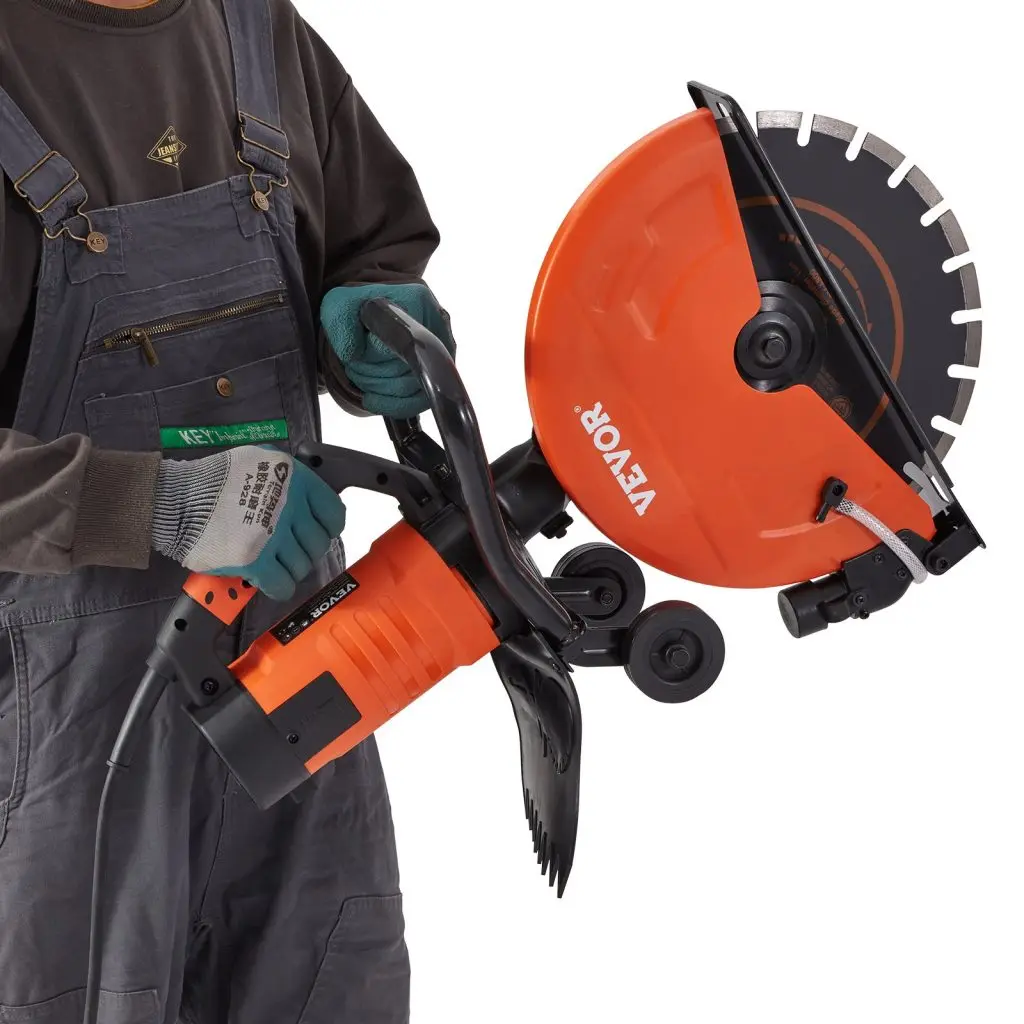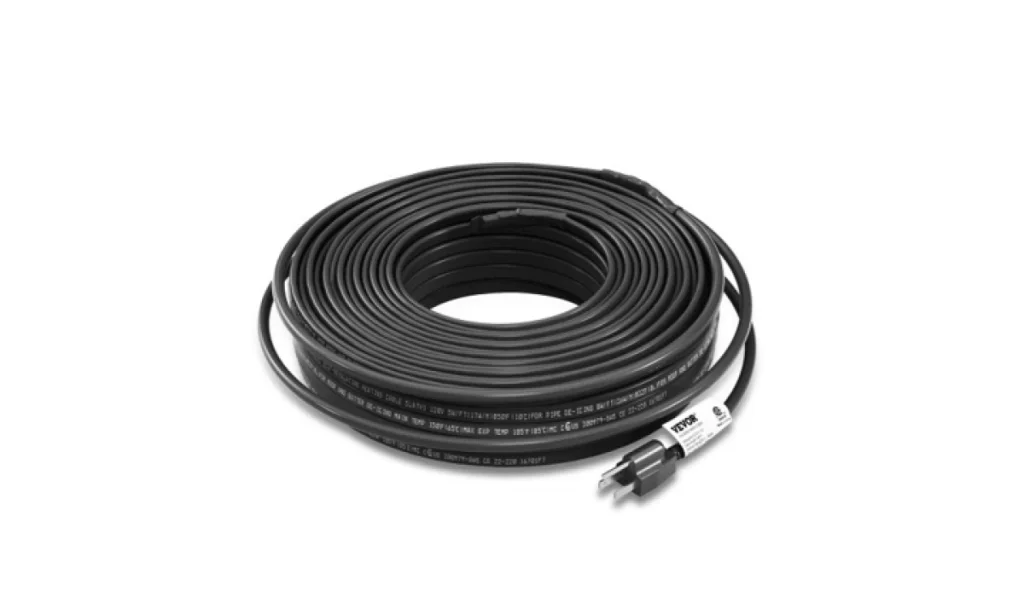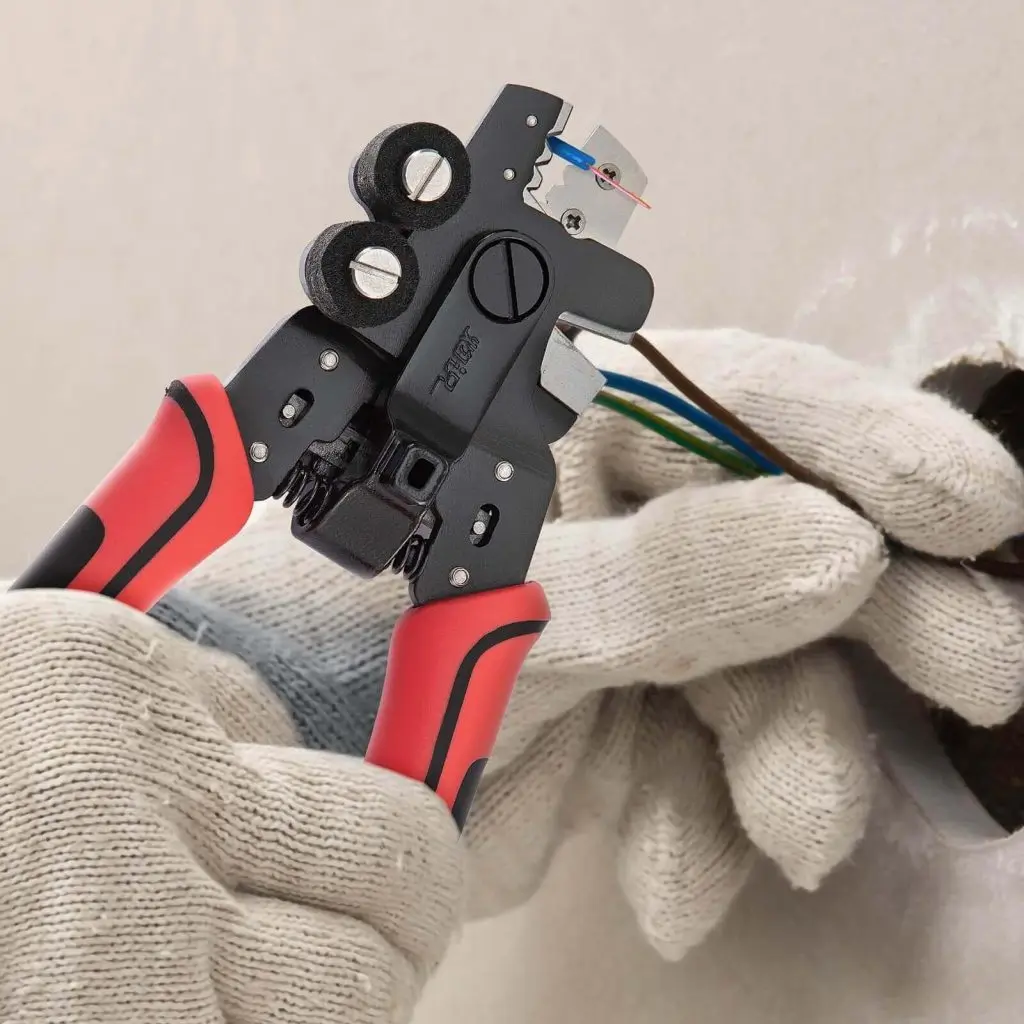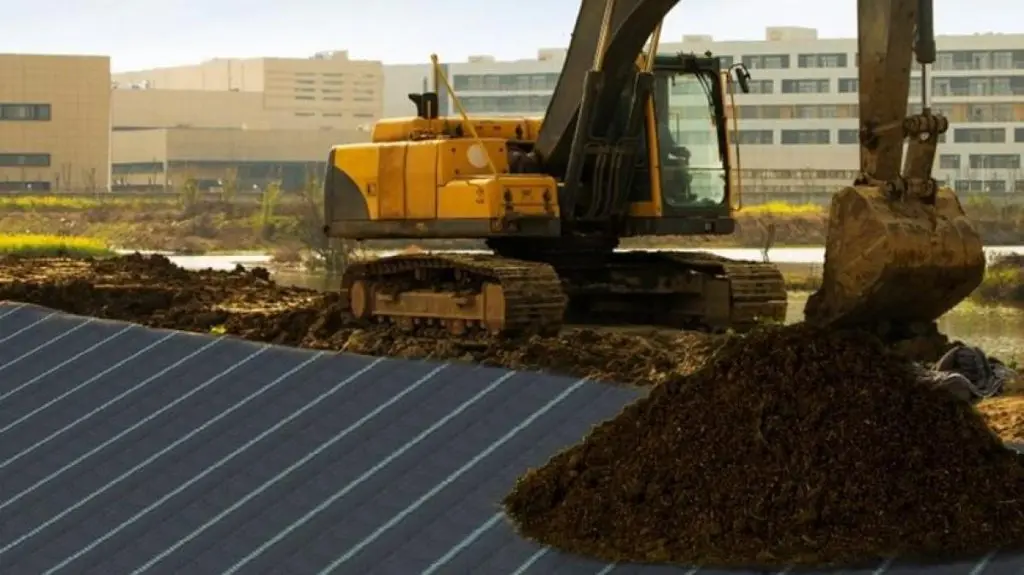Making concrete saw cuts can be quite difficult. A concrete saw cut needs to be very precise and well executed, or else the results will not be to your liking. Creating good concrete saw cuts is very important, this is especially the case if you are creating a concrete control joint.
Concrete control joints are extremely important to prevent cracks from occurring in places where they shouldn’t. Making concrete lines or control joints is something we’ll discuss further below.
However, what is important to note is that there are a few different types of concrete saw cuts, as well as factors that influence those cuts, all of which need to be discussed today. What we also want to touch on is that you need a good concrete saw in order to perform this task effectively. One of the best brand names to consider on this front is VEVOR.
Table of contents
The Basics of Concrete Saw Cuts
In construction, concrete saw cuts are designed for a variety of purposes. These are intentional grooves and lines that are cut into the concrete, into the surface, using special tools such as the concrete saw. There are many roles that these cuts play in construction.
For instance, one of the main purposes is to control cracking. Strategically placed saw cuts can create weak points that force concrete to crack along those specific lines, instead of in places where cracks can be unpredictable. As you’ll see below, another purpose of concrete saw cutting is to make expansion joints to allow large slabs to contract and expand without buckling or causing damage.
Concrete saw cuts can also be used for a variety of maintenance and safety purposes. However, what is extremely important is precision. If precision is not used when making saw cuts with concrete, you’ll run into some big problems.
If control joints and expansion joints are not properly cut, they may not serve their purpose, which can end up damaging the concrete and the surrounding structures. At the very least, if a person is not accurate and precise when making cuts into concrete, it may result in a less than pleasing aesthetic appeal.
Due to the need for precision, VEVOR is one of the leading contenders as far as concrete saws are concerned, with the VEVOR 14“ Electric Concrete Saw being a prime contender. These are state-of-the-art units that are designed with precision, power, and ease of use in mind.

Types of Concrete Saw Cuts
Important to note is that there are several different types of concrete saw cuts that can be made, and which one you use depends on your exact purposes.
Control Joints
The first and most important type of concrete saw cut that you need to be aware of is the control joint. Control joints may also be referred to as contraction joints, and these are placed purposely in the concrete to control cracking and damage that may be caused when concrete shrinks during the curing and drying process. These are strategically placed lines put in predetermined locations to prevent unsightly and random cracks from occurring. These are usually placed at regular intervals and in straight lines.
Expansion Joints
We then have the expansion joint, which is designed specifically to handle contraction and expansion of the concrete. Concrete can expand or contract due to environmental factors, moisture variations, and temperature changes.
If there were no expansion joints in place in concrete, if it were to shrink or expand, it would likely crack and become damaged. Therefore, this is a very important type of concrete saw cut for you to know. When making these kinds of cuts, the VEVOR 16” Electric Concrete Saw is a perfect option to consider.
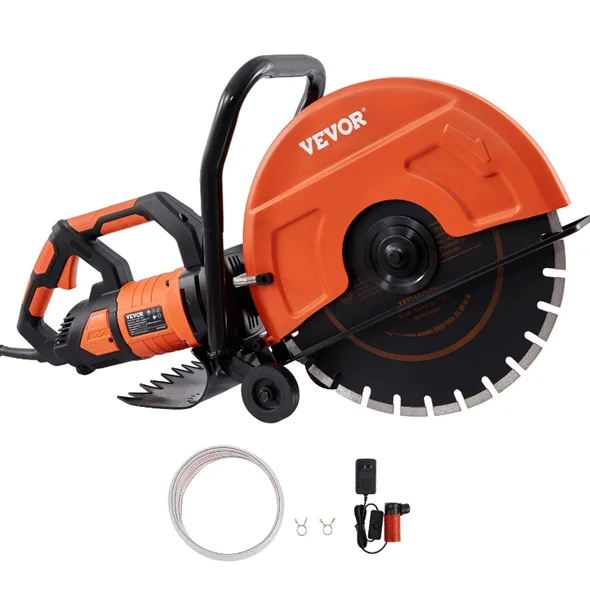
Decorative Joints
We then have decorative cuts, which as you can probably tell, is nothing more than for aesthetic appeal. You can use a concrete saw to create a variety of designs, geometric shapes, and patterns in concrete, to achieve a certain look.
Whether you need to make control joints, expansion joints, or decorative joints, the simple reality is that the concrete saws from VEVOR are extremely versatile, powerful, and user friendly, therefore making the perfect option for any situation.
Factors Influencing Concrete Saw Cuts
Several factors need to be taken into account when making concrete saw cuts, and they’re very important because they can affect the overall outcome.
Depth
One such consideration is the depth, and this is especially the case in terms of the size or diameter of the saw blade that you choose. Of course, choosing the right saw for the purpose is therefore very important.
However, depth also plays a role in other cases, specifically for control joints. For instance, if you cut the control joint too shallow, the concrete might not be weak enough and therefore leads to cracking in places where you did not want it to.
If you cut the slab too deep, you might just reduce the overall structural integrity of it. If we are talking about expansion joints, the deeper the cut, the more room there is for expansion and contraction.
Weather Conditions
You also need to consider the weather conditions when cutting concrete, as these can affect the overall result. For instance, if the temperatures are very hot, it can be difficult to achieve precise and clean cuts, although if the temperatures are too cold, concrete can become brittle and therefore break easily.
Humidity is another factor to consider, because if it’s too wet, it can slightly soften the surface of the concrete, therefore causing it to potentially crack or chip while cutting. You should then also consider wind, because if the winds are very strong, it could blow debris and dust around the area, which can negatively impact visibility and therefore safety.
Also consider that prolonged exposure to UV rays and direct sunlight can cause concrete to rapidly dry, which can cause it to become excessively hard, and therefore very difficult to cut. It is therefore very important to choose the best time of day and year to cut concrete, when the weather is moderate.
Frequency of Cuts
For the record, by frequency of cuts, we are not referring to how many cuts you make, but rather how far they are spaced apart. The more frequent the cuts are, the shorter the distance between them.
For instance, if we are talking about control joints, it’s best if the cuts are made at a higher frequency, because the closer together they are, the smaller the slabs are, and the lower the chances of damage occurring due to shrinking or cracking. This is generally all the so the case when it comes to expansion cuts.
How to Use a Concrete Saw Effectively
Using a concrete saw is not overly difficult, but safety is required. Therefore, let’s go over quick step-by-step instructions on exactly how to use a concrete saw effectively.
Make Sure the Concrete is Ready
Before you start cutting into the concrete, you need to make sure that it is ready to be cut. This means that it should be relatively solid, although usually not fully cured yet.
Cutting concrete too late or too early can have disastrous results. Not only does this result in an unsightly look, but it can also damage your saw blade. Always make sure that the concrete is 100% ready before cutting.
Prepare the Saw
You then need to prepare the saw for cutting, which means that you need to fix the proper blade for the job. Yes, there are many different types of blades to choose from, so be sure to do your research first. On that note, now is also the time to choose between wet cutting and dry cutting.
Realistically, for cutting cement and concrete, you should perform wet cutting. This means that you have a hose connected to your concrete saw that sprays water down the blade, therefore preventing excessive heat, as well as dust from flying around in the air.
Take Measurements and Make Markings
Before you make any cuts, be sure to measure twice and make your markings. Once you cut into concrete, there’s no going back, so you need to be sure to do this right in the first place. Depending on the exact job you are looking to perform, you’ll need to space those cuts at different intervals, so do your research on this front.
Put on Your Safety Gear
Next, you want to put on all of your most relevant safety gear, with safety glasses, breathing protection, and hearing protection being the bare minimum. Remember, concrete sauce can be fairly dangerous, so adequate protection is required.
Hold the Saw Steadily and Make the Cut
Now that all of the preparation is out of the way, you can start making your cut. Turn on the saw as indicated in the directions on your saw in question, get the blade spinning up to full speed, and then slowly touch it to the concrete where you’ve made your marking.
Keep cutting until the saw blade reaches its maximum depth, or the desired depth to which you need to go, and then slide the saw along to complete the cut horizontally, or vertically if needed.
Tips for Maximizing Concrete Saw Performance
Let’s go over a few valuable tips that you need to follow when making concrete saw cuts so you can achieve the best results every time.
Blade Selection
You need to be aware that there are different types of blades for different jobs and conditions. For instance, there are different types of concrete, hard aggregate and soft aggregate, as well as green concrete, cured concrete, and more.
Different blades are ideal for different materials, and this is very important for you to know. Using the wrong blade for the wrong type of concrete or for the wrong job will not only result in the task not being completed successfully, but will likely also break the blade.
Saw Maintenance
As far as concrete saw maintenance is concerned, this is very important to perform on a regular basis to ensure that your concrete saw works every time you go to turn it on. Therefore, you always want to do regular inspections of all of the hardware components as well as the interior.
Make sure to check the spark plug to see that it is functioning properly, and that the saw is properly fueled up.
You’ll also want to ensure that all of the necessary moving components are properly lubricated for minimal friction. On that note, before every use, always inspect the saw blade to ensure that it is not warped or cracked. If the saw blade is damaged in any way, it will need to be replaced.
Timing
Timing is also very important when cutting concrete. Generally speaking, you don’t want concrete to be fully cured, or else it may lead to irregular edges, chipping, and other issues. Generally speaking, you want the concrete to be dried and hard to the touch, but not totally cured.
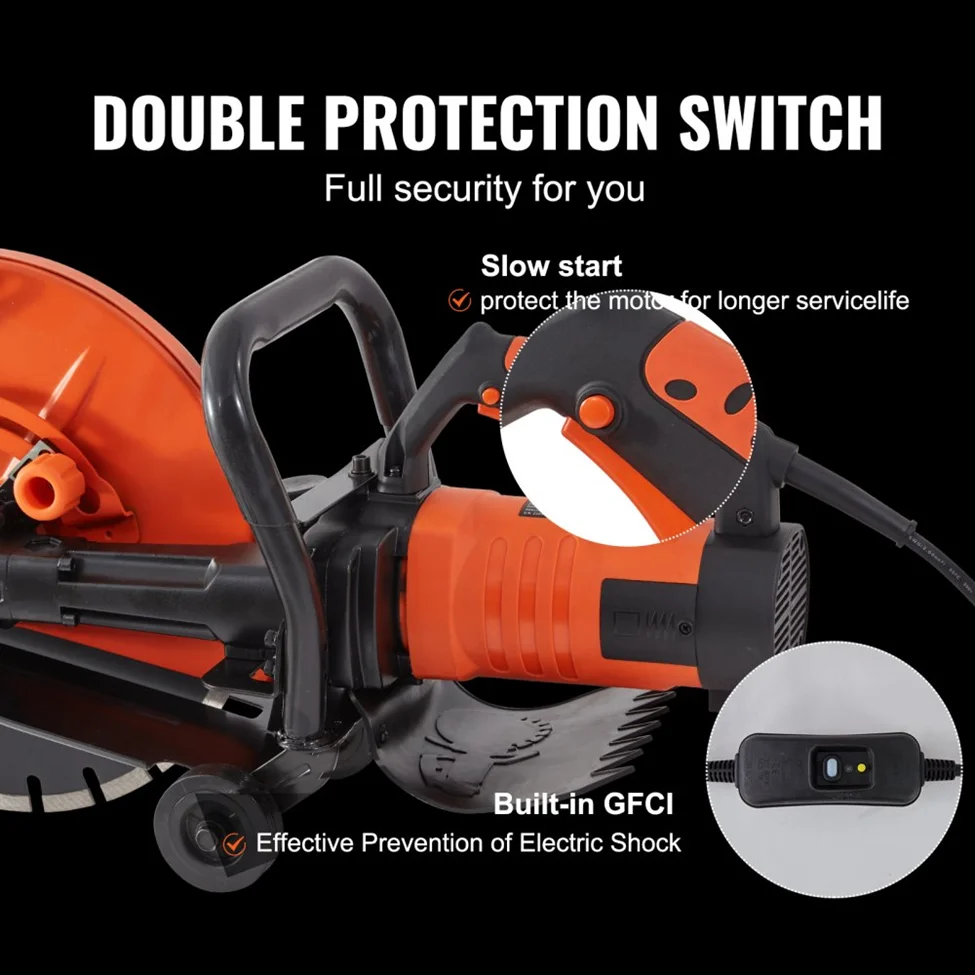
Common Mistakes to Avoid in Concrete Saw Cutting
Let’s go over some common mistakes that you need to avoid when cutting concrete with a saw.
· Never ignore environmental factors when cutting concrete. If it’s either too hot or too cold, or too humid, then you need to adapt your methods or postpone the job.
· Never forget to engage in proper concrete dust control. Using either a dust collection system or water to suppress the dust is recommended.
· Never neglect wearing proper safety gear, as this can be very dangerous.
· Don’t use excessive speed or force when cutting concrete with a concrete cutting saw, as this can also be very dangerous.
· Choosing the wrong kind of blade for the job at hand can also be very dangerous.
FAQs about Concrete Saw Cut
Here are some frequently asked questions about concrete sawing.
How deep to cut concrete joints?
When cut to control joints, they should be anywhere between 1/4 and 1/3 of the thickness of the slab.
How deep does a concrete saw cut?
Depending on the size of the concrete saw in question, some may be able to cut as deep as 24 inches, or deeper.
Why does concrete need to be cut?
Concrete generally needs to be cut to prevent damage from occurring due to expansion and contraction.
When to use concrete expansion joint?
Expansion joints are used on large slabs of concrete to ensure that they can adequately expand and contract when needed.
When to cut concrete after pouring?
Generally speaking, concrete should be cut when it has dried, but not when it has already totally cured.
Conclusion
The bottom line here is that being able to make extremely precise concrete cuts is important for the overall result of the project in question. If the cuts aren’t precise, you’ll likely end up damaging the concrete, whether during the initial cutting phase or afterwards due to poor results. What it really comes down to is that me precision equipment, and this is what you get with VEVOR.

